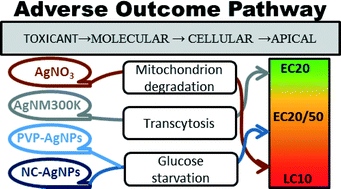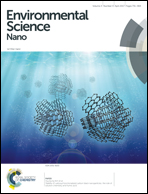High-throughput transcriptomics reveals uniquely affected pathways: AgNPs, PVP-coated AgNPs and Ag NM300K case studies†
Abstract
Understanding the mode of action of nanomaterials (NMs) aids in improving predictions and environmental risk assessment. In the present study, a high-throughput (HTP) microarray was used to study Enchytraeus crypticus gene expression. Four Ag materials (Ag NM300K, PVP-coated AgNPs, AgNPs, and AgNO3) were tested at reproduction effect concentrations, EC20 and EC50, to anchor gene expression responses to higher effect level. The results showed that while PVP-AgNPs and AgNPs had similar responses, Ag NM300K caused effects via a differentiated transcriptomic profile, with uniquely affected processes (e.g. transcytosis). For the AgNPs, the EC50 negatively affected apoptosis, which can lead to accumulation of abnormal cells and cause apical damage (reproduction). Mechanisms which are known to be related to Ag toxicity and which were observed here for the various Ag forms included apoptosis regulation, cell redox homeostasis, impairment of energy production and response to DNA damage. This HTP genomic tool enabled discrimination between Ag materials, which is not possible via standard tests (i.e. survival and reproduction endpoints). Moreover, gene expression analysis provided information regarding the mechanisms of toxicity of NMs and the pathways uniquely affected by NMs. An adverse outcome pathway (AOP) was drafted for the first time for Ag NMs; this AOP can and should be used as a basis for further research.



 Please wait while we load your content...
Please wait while we load your content...